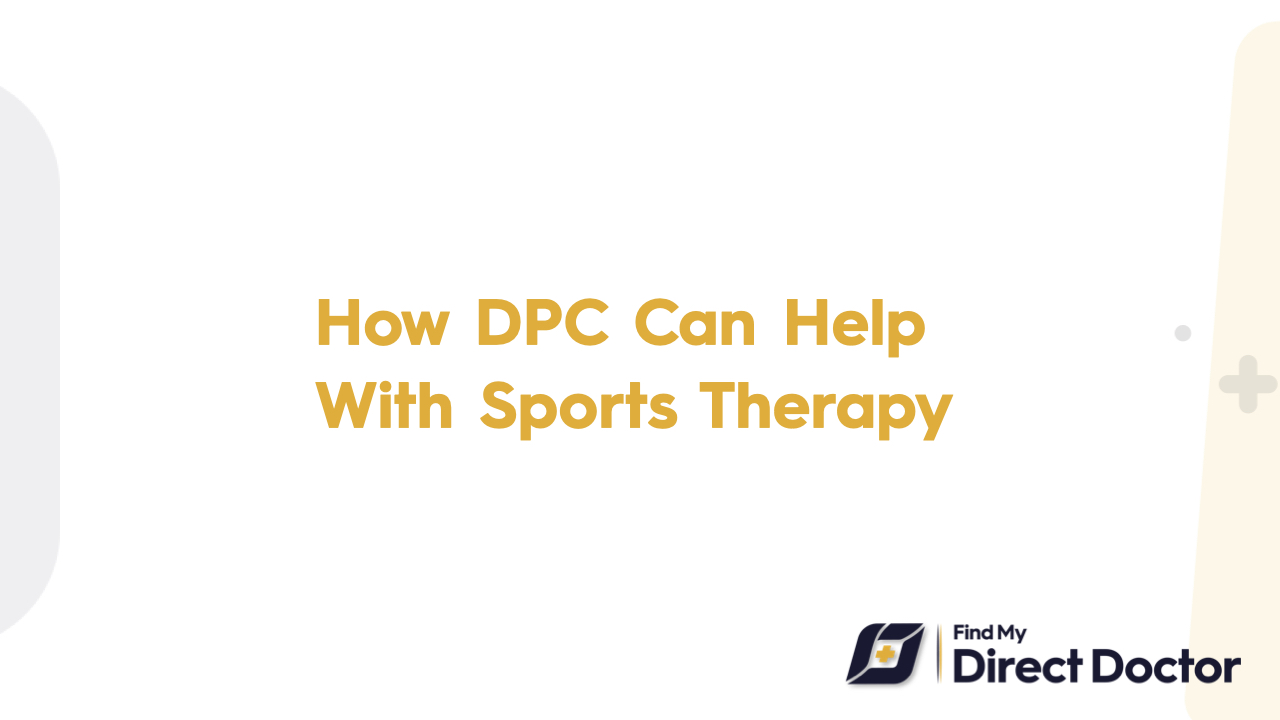Sports Therapy and Direct Primary Care (DPC): Recovery, Resilience, Peak Performance
If you get hurt while playing sports, targeted therapy can speed up your recovery. Direct Primary Care (DPC) makes sure that your rehab is organized, affordable, and fits your athletic goals.

What is Sports Therapy? Moving to Heal
Sports therapy employs evidence-based methodologies to address injuries and improve performance. Common treatments:
- Joint mobilizations and soft tissue massage are examples of manual therapy.
- Rehab exercises: Bring back strength, flexibility, and body awareness.
- Ultrasound, electrical stimulation, or dry needling are all ways to do this.
Important things to know:
- Uses: Helps with sprains, strains, tendonitis, and recovery after surgery.
- Safety: Doesn't hurt; lessens the need for painkillers.
- Costs: DPC memberships include therapy sessions, which is different from traditional fees, which are 80–150 USD per session.
How DPC Improves the Results of Sports Therapy
Direct Primary Care (DPC) changes rehabilitation by making it easier to work together and putting the athlete first.
Full Injury Management
- Quick tests: Make an appointment for an MRI or X-ray within 48 hours.
- Plans just for you: Make rehab plans for specific sports, like ACL protocols for soccer players.
- Managing medications: Cut back on NSAIDs to protect tissues that are healing.
Clear prices and all-around help
- Care that includes everything: PT, chiropractic care, and massage therapy are all included in the membership.
- Saving money: Self-pay DPC rates can help you save 30–50% on copays.
- Mental toughness: Help people with anxiety about injuries by giving them sports psychology.
Recovery and Prevention That Is Unique to You
- Access around the clock: Change the intensity of rehab for flare-ups through telehealth.
- Tracking progress: Use motion capture or force plates to get biomechanical feedback.
- To avoid getting hurt, make sure your warm-ups and recovery routines are different every time.
DPC's Benefits for Athletes
- No waiting times: DPC patients start therapy within a week, while traditional patients wait three weeks or more.
- Continuity: One group is in charge of rehab, nutrition, and getting players back on the field.
- There are no extra fees. Prices that are clear (for example, 1,200 USD for 12 PT sessions).
Success Stories from Real Life
- Case 1: Lena, 28, has a tear in her rotator cuff. Lena's DPC team used both physical therapy and dry needling. She was back to climbing in 8 weeks.
- Case 2: Dev, 19, after having ACL surgery. Dev's DPC provider used blood flow restriction training, which made his quads stronger 30% faster.
Questions and Answers: Sports Therapy in DPC
- Q: How many times will I need to do this?
- A: 6 to 24 sessions, depending on how bad the injury is; DPC changes every two weeks.
- Q: Are recovery methods included?
- A: Yes, you can use NormaTec, cupping, or cryotherapy through DPC partners.
- Q: Is it okay for me to keep training while I'm in rehab?
- A: DPC makes cross-training plans to keep you fit in a safe way.
- Q: What if I hurt myself again?
- A: DPC lets you change your plan and get a new assessment on the same day.
Why DPC is the best place for sports rehab
The American Physical Therapy Association (APTA) stresses personalized care. DPC delivers by:
- Less downtime: Custom plans cut recovery time by 20–40%.
- Increasing adherence: 90% of DPC patients finish therapy, while only 65% of patients in the U.S. do.
- Saving money: Members save between 1,000 USD and 5,000 USD a year by getting all of their care in one place.
Final Thoughts
Sports therapy at DPC isn't just about getting better; it's about getting better than you were before. With DPC, you don't have to deal with insurance problems, you can see the best therapists, and you can get a rehab plan that works for you. Experience care that focuses on your victory from injury to comeback.






